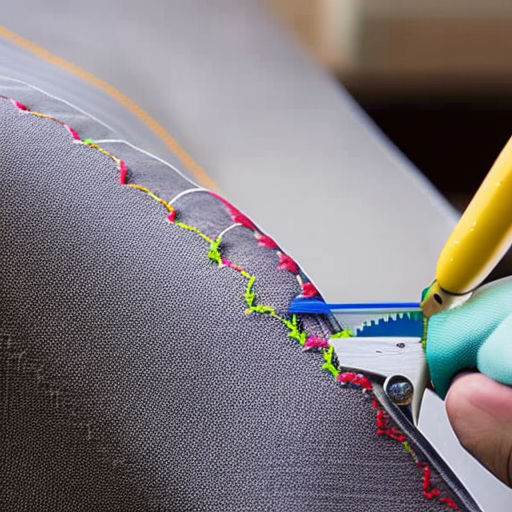
Whether you’re a professional upholsterer or a DIY enthusiast, having a good knowledge of stitching upholstery techniques can bring your furniture restoration projects to life. From fixing tears and replacing fabrics to creating decorative details, stitching plays a crucial role in achieving beautiful and durable upholstery work.
Basic Stitching Techniques
Before diving into more complex stitching techniques, it’s important to master the basics:
-

Running Stitch: This simple stitch involves passing the needle in and out of the fabric at regular intervals, creating a continuous line of stitches. It’s commonly used for basting, attaching fabric layers temporarily, or basic seam stitching.
-

Backstitch: Ideal for strong and secure seams, the backstitch involves stitching backward by passing the needle back into the previous stitch. This technique is great for reinforcing weak areas or stitching fabrics with high tension.
-

Topstitching: Visible on the outside of the upholstery, topstitching adds a decorative effect and reinforces seams. It involves sewing a line parallel to the seam, about 1/8 inch apart.
Advanced Stitching Techniques
Once you’ve mastered the basics, you can explore more advanced stitching techniques to achieve intricate details and professional-grade upholstery:
“The devil is in the details.”
Here are a few exquisite stitching techniques to consider:
- Hand-Quilted Detailing: This technique involves stitching patterns or designs onto the upholstery fabric through layers of padding, resulting in beautiful raised designs.
- Blind Stitch: Ideal for creating nearly invisible seams, the blind stitch hides the stitches so only small dots are visible on the outside of the upholstery.
- Double-Needle Stitch: By using two needles with a single thread, you can create parallel rows of stitching that provide extra durability and a decorative touch.
- Decorative Embroidery: Adding decorative hand embroidery to your upholstery not only looks elegant but also allows you to personalize your furniture with unique designs.
References:
1. Upholstery Basics by David James
2. The Complete Upholsterer’s Handbook by Carole Thomerson
3. “Mastering Upholstery Stitches” – Upholstery Journal







